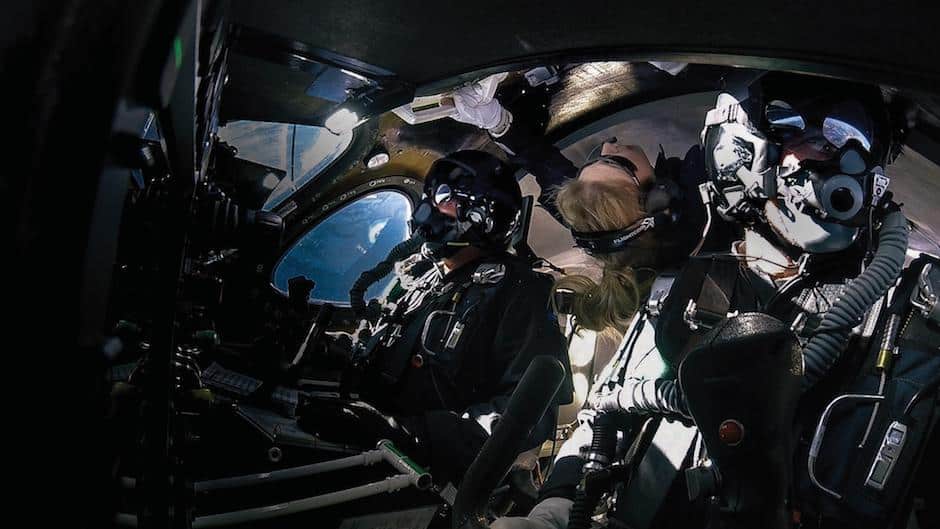
During the flight, Chief Pilot Dave Mackay and co-pilot Michael “Sooch” Masucci took the spacecraft to an altitude of 295,007ft (89,918 m) and reached a speed of Mach 3.04 (2,255 mph)
The latest test takes Sir Richard Branson’s project a step closer to its goal of introducing commercial sub-orbital space flight. This refers to spaceflight in which the spacecraft reaches outer space, but doesn’t reach an altitude where it orbits the Earth. The company has previously said that it hopes to begin commercial flights by the end of 2019. So far, around 700 people have signed up to take a ride on the spacecraft.
The reusable spaceplane was launched from the Mojave space port in California aboard the company’s giant composite carrier aircraft WhiteKnightTwo. It was released from the carrier craft at an altitude of 44,000 feet (13411 metres) before being catapulted 55 miles above the Earth by VSS Unity’s powerful hybrid rocket engine.
During the flight, the crew enjoyed several minutes of weightlessness while the pilots “feathered” the spaceship in preparation for a Mach 2.7 re-entry.
The feathering system, designed by the engineer Burt Rutan, was inspired by the badminton shuttlecock, and works by changing the configuration of the spacecraft’s aerodynamic structure to create drag and slow the vehicle down as it returns to earth.

The glide back home was followed by a smooth runway landing and a rapturous reception from the crowd on the flight line, which included staff and some of Virgin Galactic’s future astronaut customers.
The flight marked the first time that the rocket had carried a third crew member: Beth Moses, Virgin Galactic’s Chief Astronaut Instructor, who became the first woman and the first non-pilot to fly on board a commercial spaceship.
Commenting on the flight Chief Pilot Dave Mackay, a former RAF test pilot said: “Beth, Sooch and I just enjoyed a pretty amazing flight which was beyond anything any of us has ever experienced. It was thrilling yet smooth and nicely controlled throughout with a view at the top, of the Earth from space, which exceeded all our expectations. I am incredibly proud of my crew and of the amazing teams at Virgin Galactic and The Spaceship Company for providing a vehicle and an operation which means we can fly confidently and safely. For the three of us today this was the fulfilment of lifelong ambitions, but paradoxically is also just the beginning of an adventure which we can’t wait to share with thousands of others.”
Sir Richard Branson said: “Flying the same vehicle safely to space and back twice in a little over two months, while at the same time expanding the flight envelope, is testament to the unique capability we have built up within the Virgin Galactic and The Spaceship Company organisations. I am immensely proud of everyone involved.”





Glasgow trial explores AR cues for autonomous road safety
They've ploughed into a few vulnerable road users in the past. Making that less likely will make it spectacularly easy to stop the traffic for...